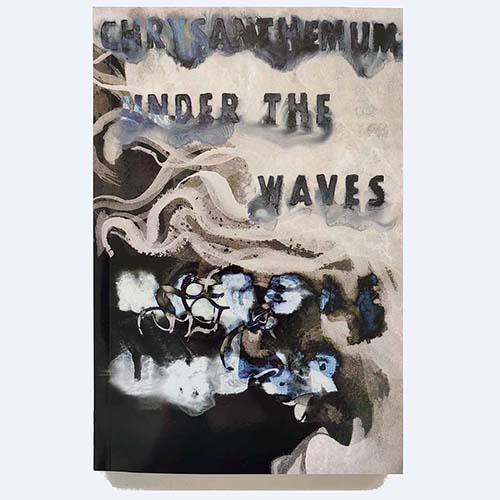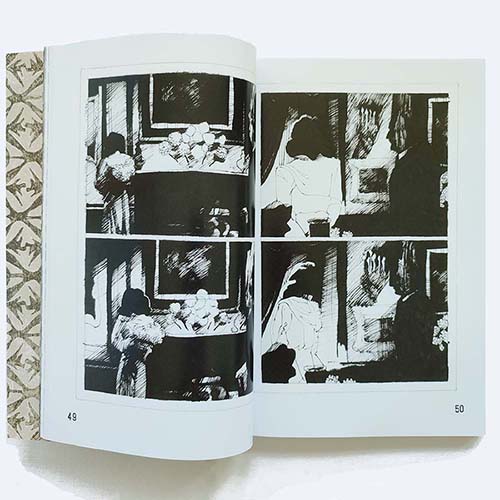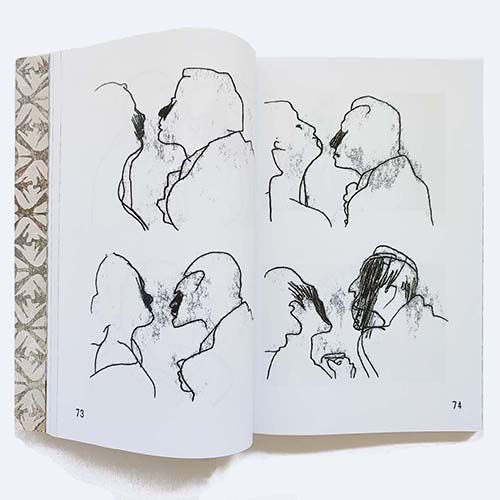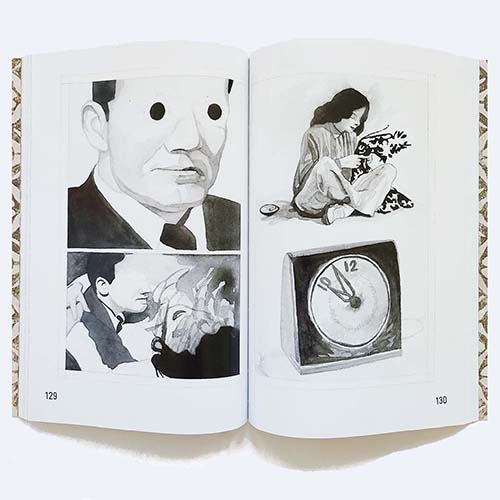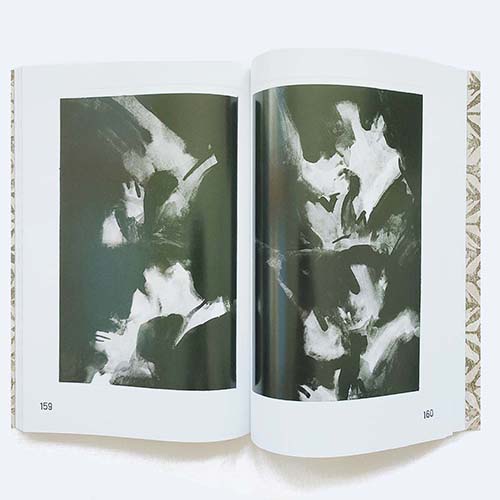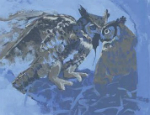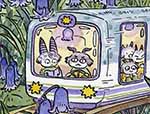Chrysanthemum Under the Waves is a self-published collection of comics from cartoonist and former 2dcloud associate publisher Maggie Umber. Within nine wordless, black and white vignettes, Umber expresses a mourning for the life she once had; having recently been left by her husband and business partner, her company falling into chaos and her body failing her were just a few ways in which Umber was struggling. Focusing her pain into her art, Umber began to bring the eerie pages of Chrysanthemum Under the Waves to life six years ago.
The inspiration for the underlying darkness of Chrysanthemum Under the Waves was the ‘demon-lover’ literature of some of the greats, like Shirley Jackson, Sylvia Plath and Elizabeth Bowen. These kinds of stories tend to confront the haunting effects of the past and the unresolved emotional ties of the present, with themes of memory, loss and haunting throughout.
Umber’s wordless illustrations definitely reflect this feeling. They are inky, dark, abstract, odd, and yet strangely alluring. These aren’t simple vignettes in which the illustrations will easily tell you the meaning; rather, these short stories are unclear, with handfuls of disturbing meanings being able to be drawn from the pages.
Throughout the twisting and turning narratives, one character sticks out; the smiling man in the sharp suit, present in each narrative. In both her introduction and epilogue, Umber explains her growing obsession with James Harris, a reoccurring ghost in Shirley Jackson’s stories. Using him as a motif, Umber makes her thoughts on her marriage ending perfectly clear; Handsome Harris seduces and lures the women in Chrysanthemum Under the Waves before pulling the rug out from under them, throwing into disarray everything they knew to be true. In this same way, Umber feels like she no longer knows what her identity is.
One of the most interesting stories was ‘The Rock’, in which a woman is ferried to an island, where a demonic figure is waiting for her. She soon realises that her fate is completely out of her hands the moment she steps foot on the rocky shore. In her afterword, Umber tells readers her exact intention with this story, and how it is a variation on the demon lover theme, in which a woman is seduced into giving up her life to join a former lover in Hell. Another story I particularly enjoyed was ‘The Witch’, in which Umber makes terrifying use of still frames, stark white, and close-ups of teeth to make her ghostly figures particularly creepy.
The style throughout is very experimental, with each story being drawn or printed in a completely different way. Whilst each vignette sticks to the gothic, inky, black and white colour palette, some stories make use of ghostly smeared silhouettes, whilst others are extremely detailed, showing every emotion on a character’s face. Still otherss lean more into the detective, noir-mystery style, whilst some are in a wood-cut style.
Almost all of the segments are wordless, aside from those which directly quote poetry. As a lover of gothic poetry, these were perhaps my favourites, as I found the echoing words the most eerie:
They had not sailed another league
A league but barely three
When she espied his cloven foot
And wept most bitterly.
Chrysanthemum Under the Waves took 6 years to complete, a real labour of love, which must have been particularly difficult when confronting one’s own inner turmoil. Umber should be immensely proud of the darkly layered, haunting insight into her psyche that she has so bravely bared to the world.
Maggie Umber (W/A) • Self-published, $35.00
Review by Lydia Turner





